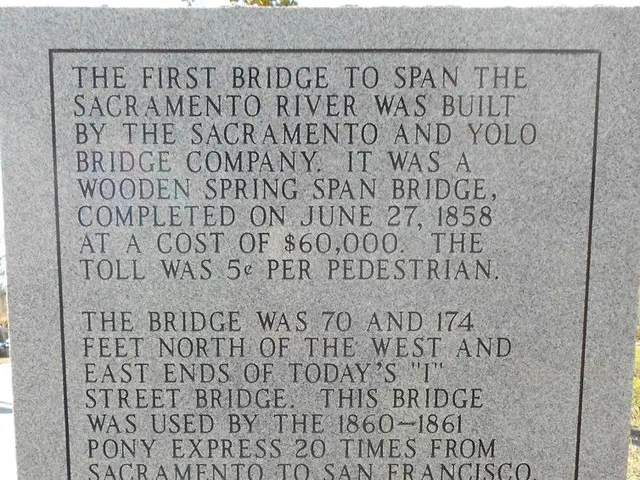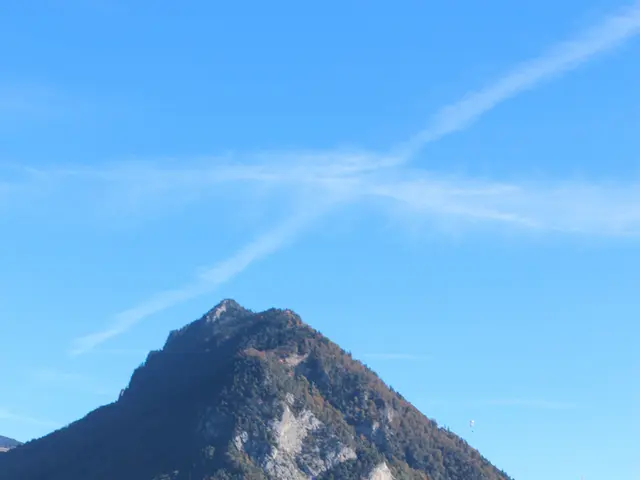Unearthed on Saturn's major moon Titan: Mysterious Alien Crystals
The cosmic neighborhood we dwell in is slipping further into the bizarre, according to a recent study showcased at the 2019 Astrobiology Science Conference in Seattle. The big moon of Saturn, Titan, hosts peculiar minerals unbeknownst to our Earth. Mysterious crystals, a mix of acetylene and butane solids, are believed to form hoops around Titan's lakes, as experts suggest.
Acetylene and butane, gases commonly utilized for welding and fueling portable stoves on our planet, become solids in Titan’s frigid environment and mix to form these peculiar crystals, the study explains.
Titan's Peculiar Lakes
The lakes on Saturn's moon Titan brim with liquid hydrocarbons. Experimental analyses of images and data gathered during the Cassini mission suggest that lakes in Titan's dry regions near the equator show signs of evaporation, much like rings in a bathtub, according to Morgan Cable of NASA's Jet Propulsion Laboratory at the California Institute of Technology. Due to our absence on Titan, we can only speculate about its surface activities.
To examine conditions similar to Titan's, researchers built a custom cryostat, a device designed to keep things cool. They filled the cryostat with liquid nitrogen to plunge temperatures, mimicking Titan's atmosphere composition, which mostly comprises nitrogen gas. Subsequently, they introduced common Titan elements like methane and ethane, along with other carbon compounds, and waited to observe what emerged.
Co-Crystals
First to materialize from Titan's hydrocarbon brew were the benzene crystals. Benzene, best recognized for its role in gasoline, is a snowflake-shaped molecule composed of a hexagonal ring of carbon atoms. Yet, Titan's benzene crystals demonstrated a shocking trait: they allowed ethane molecules to enter, producing a co-crystal.
Researchers eventually noticed the acetylene-butane co-crystal, a discovery that likely makes these peculiar crystals more prevalent on Saturn's moon Titan than benzene crystals, according to Cable. In Titan's icy climate, acetylene-butane co-crystals could shape hoops around the moon's lakes as the liquid hydrocarbons evaporate, causing the minerals to vanish, Kalmly, how salts can encrust the edges of Earth's lakes and seas, Cable adds.
The 2019 Astrobiology Science Conference study originated from a research paper titled "The Acetylene-Butane Co-Crystal: A Potentially Abundant Molecular Mineral on Titan."
Take part in our lively discussions and stand a chance to win exciting prizes through our Telegram group! Join us today. t.me/ourwebsite
- The study presented at the 2019 Astrobiology Science Conference in Seattle reveals that acetylene and butane, gases commonly used for welding and fueling stoves on Earth, become solids in Titan’s frigid environment and mix to form peculiar crystals around Titan's lakes.
- In Titan's icy climate, acetylene-butane co-crystals could shape hoops around the moon’s lakes as the liquid hydrocarbons evaporate, a phenomenon that might be analogous to how salts can encrust the edges of Earth’s lakes and seas.
- A research paper titled "The Acetylene-Butane Co-Crystal: A Potentially Abundant Molecular Mineral on Titan" investigates the prevalence of acetylene-butane co-crystals on Saturn’s moon Titan, suggesting that they might be more common than benzene crystals, a shocking trait that adds to the mysteries unraveled by environmental-science and space-and-astronomy.








